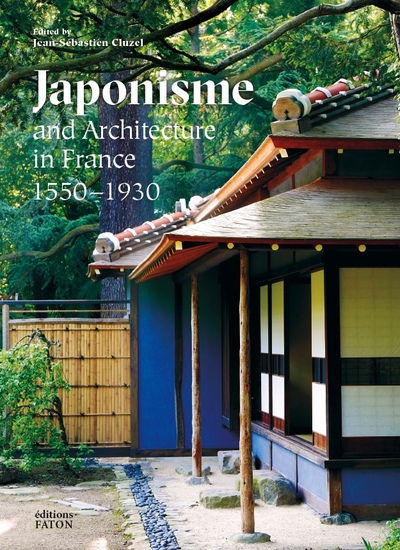Nous utilisons des cookies pour améliorer votre expérience. Pour nous conformer à la nouvelle directive sur la vie privée, nous devons demander votre consentement à l’utilisation de ces cookies. En savoir plus.
JAPONISME AND ARCHITECTURE IN FRANCE - 1550-1930
Faton - EAN : 9782878443073
Édition papier
EAN : 9782878443073
Paru le : 19 août 2022
69,00 €
65,40 €
Disponible
Pour connaître votre prix et commander, identifiez-vous
Notre engagement qualité
-
 Livraison gratuite
Livraison gratuite
en France sans minimum
de commande -
 Manquants maintenus
Manquants maintenus
en commande
automatiquement -
 Un interlocuteur
Un interlocuteur
unique pour toutes
vos commandes -
 Toutes les licences
Toutes les licences
numériques du marché
au tarif éditeur -
 Assistance téléphonique
Assistance téléphonique
personalisée sur le
numérique -
 Service client
Service client
Du Lundi au vendredi
de 9h à 18h
- EAN13 : 9782878443073
- Editeur : Faton
- Date Parution : 19 août 2022
- Disponibilite : Disponible
- Barème de remise : NS
- Nombre de pages : 400
- Format : 2.60 x 21.70 x 28.60 cm
- Poids : 1.756kg
- Résumé : Is Japonisme also a history of architecture? In this book, the authors lay bare the origins of the taste for Japanese architecture in the West. Born long before what French nineteenth-century art critics called Japonisme, this taste can be detected in a wealth of objects: screens, porcelain, lacquer-work, woodcuts, photographs, as well as in interior decoration and garden pavilions. With more than 500 illustrations in colour, this handsome book presents noteworthy historical and archaeological studies of the bestknown buildings from the heyday of Japonisme: the pavilions at the Paris Universal Exhibitions between 1867 and 1900; the first Japanese house built in France (1886); the Salle de fêtes, a function room on the rue de Babylone in Paris known today as the cinéma La Pagode (1896); the follies in Albert Kahn’s Japanese garden at Boulogne- Billancourt (1897); and the Stork Chamber, an exhibition set salvaged by Émile Guimet in 1911. These investigations reveal an interplay in artistic output between Japan and France that is essential to an understanding of those Japanese spaces held in such high regard by Westerners. Leafing through the book, the reader is left in no doubt about the emergence in architecture of a stately expression of Japonisme.



